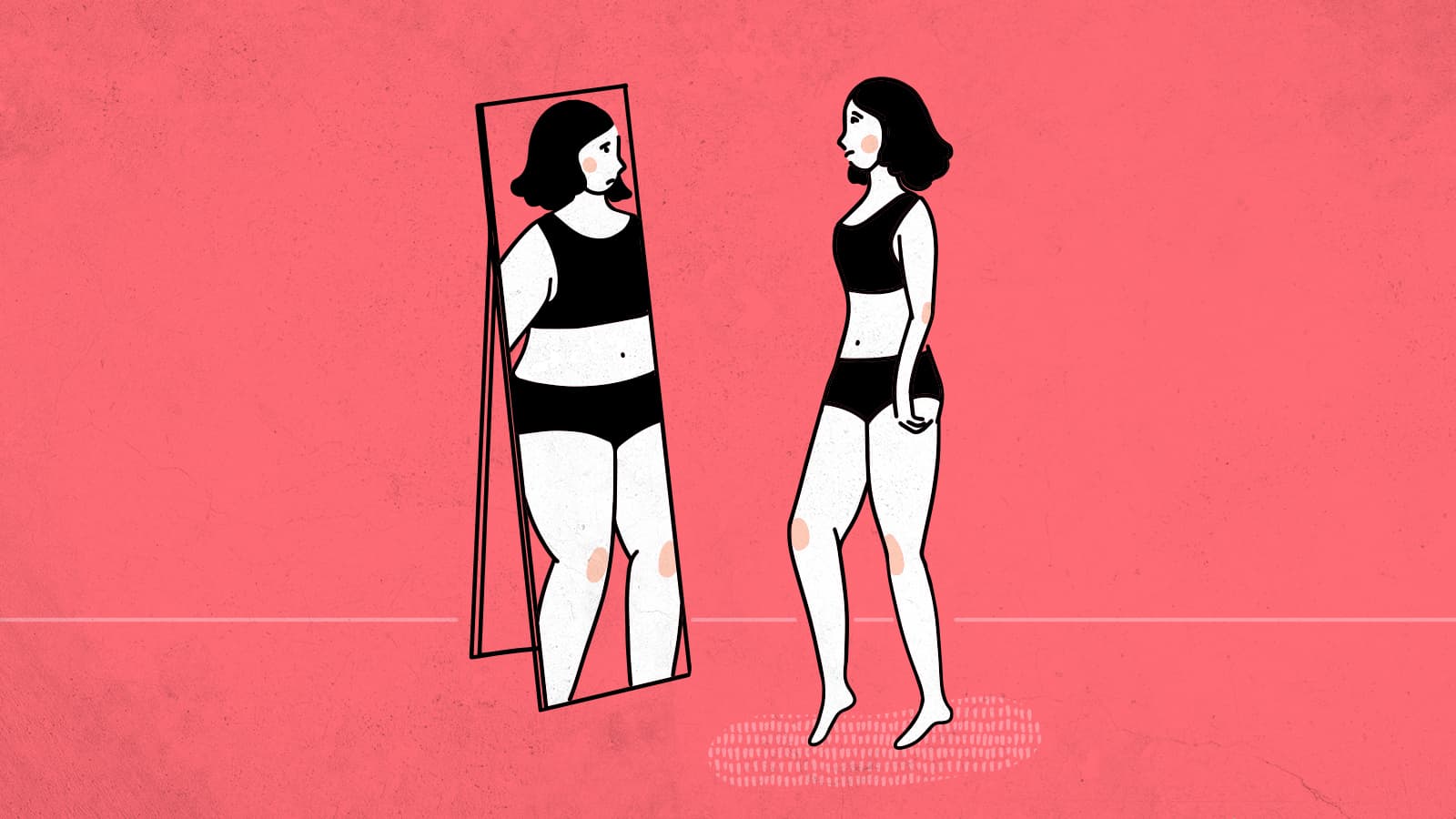When a person’s self-image is so negative, it can take a toll on their mental health. Body dysmorphia occurs when people are preoccupied with the idea that their physical appearance is flawed. Their negative fixation causes issues in their life, but they can reverse it.
Body dysmorphia is a mental health condition that is difficult to diagnose. It often goes untreated because it is overlooked and ignored. However, there are some causes that you should never ignore.
The most significant indicator of body dysmorphic disorder is when someone is obsessed with their body. They’ll fixate on their skin, hair, facial flaws, body type, and other things that most people probably don’t even notice. While people might brush it off as a lack of confidence, it goes much deeper than that.
Body dysmorphia can affect a person’s life severely if left untreated. Identifying the causes can make all the difference in overcoming the disorder and living a more comfortable life.
What is Body Dysmorphia?
People with body dysmorphic disorder (BDD) have an inaccurate view of themselves. They might think they are deformed, ugly, or abnormal compared to others. It becomes an obsession, and they focus on their appearance so much that it interferes with their daily activities.
BDD goes beyond feeling self-conscious about a flaw because it causes severe distress constantly. The person might spend excessive time grooming themselves and checking their appearance. They also might hide their body when being social or avoid social situations altogether.
The preoccupation with appearance is typically unwanted but produces repetitive behaviors anyway. It becomes hard to control and time-consuming, making it harder to function. Some of the standard features those with BDD obsess over include:
- Face, including nose, complexion, lines and wrinkles, blemishes, and acne
- Hair, including styling, thinning, and baldness
- Breast size or shape
- Skin appearance, including veins
- Muscle tone and size
This disorder can interfere with relationships, work, and learning abilities. It typically begins during the teenage years, but it isn’t uncommon to start during adulthood. There are two types of BDD, and understanding the differences can help identify the cause.
Types of Body Dysmorphic Disorder
While there are other forms of BDD, there are two main kinds, including:
Muscle Dysmorphia
When someone is obsessed with the size and shape of their muscles, it’s called muscle dysmorphia. It involves thinking their muscles aren’t big or toned enough. The condition causes distress and can lead to steroid abuse or unhealthy eating habits.
Craniofacial Dysmorphia
If someone excessively focuses on their face, it’s called craniofacial dysmorphia. The person often obsesses over the shape of their chin, nose size, or the position of their eyes. Their fixation can cause anxiety, social isolation, or depression as they constantly think they look bad.
Sixteen Symptoms of Body Dysmorphia Disorder
This disorder is different from wanting to get in shape or lose weight. It impacts your life in unhealthy ways, whereas getting in shape promotes your well-being. Someone suffering from the condition might experience some of the following symptoms:
- Obsessive fixation with one’s body
- Repeatedly checking the mirror
- Interruption of daily life
- Avoiding socialization
- Repetitive behaviors regarding appearance cause distress
- Can’t stop thinking about perceived flaws
- Frequently touching up your appearance
- Seeking constant reassurance
- Seeking numerous cosmetic procedures without achieving long-term satisfaction
- Feeling mocked about appearance
- Frequent skin picking
- Constantly comparing to others
- Perfectionist tendencies
- Preoccupation with the size of your body or muscles
- Avoiding situations that might draw attention to their appearance
- Constantly body shaming themselves
Six Causes of Body Dysmorphia
The exact cause of BDD remains unknown, but there can be many contributing factors. The condition could occur because of one reason or a combination of issues. By acknowledging the cause, you can work to overcome the dysmorphia. These causes include:
1. Genetics
People with close family members with BDD are more likely to develop it themselves. Knowing you’re at risk can make you more self-aware and watch for the symptoms.
2. Trauma or Abuse
Emotional abuse can cause body dysmorphic disorder, mainly during childhood. Physical and sexual abuse can also lead to self-image issues that become obsessions. Excessive teasing from peers or body shaming can cause problems throughout your life.
Unresolved conflict from childhood can cause these severe body image issues. Neglecting by caregivers or parents can cause the disorder to set in later in life, along with any other form of neglect.
It’s also important to note that adulthood trauma or abuse can cause BDD. Anytime your self-worth is questioned, or someone makes you feel wrong about who you are, it can lead to serious body image issues.
3. Excessive Drinking or Drug Use
Some studies indicate that heavy drinking or drug use can lead to BDD. The substances change your thinking and cause you to feel bad about yourself.
4. Stressful Events
You’re more likely to develop BDD after stressful life events. These events could include the death of someone close to you or the diagnosis of a severe illness. With overwhelming stress, you’ll subconsciously look to control whatever you can, and appearance often takes priority.
5. Low Self-Esteem
People with low self-esteem focus on their flaws, which can quickly become an obsession. They struggle to appreciate their good qualities and assume no one else can see the good. It leads to avoidance behaviors and constantly checking their appearance.
Those with low self-esteem and BDD often use plastic surgery for their flaws. However, the comfort they receive from the surgery doesn’t last long. They quickly find something else to fixate on or decide the surgery wasn’t enough to correct the issue.

6. Societal Pressure
If you’re surrounded by people who fixate on their appearance, it can cause mental health issues. Even worse, having people tell you that you must look a certain way can drastically change how you view yourself.
What Can Happen if You Don’t Get Help for the Body Dysmorphia
Body dysmorphic disorder can cause many issues in a person’s life. There are a few mental illnesses associated with BDD, including the following:
-
Anxiety Disorders
Anxiety is the most common mental illness associated with BDD. It causes overwhelming worry and fear regarding their appearance, causing anxiety every day.
-
Depression
When someone constantly stresses about their appearance, it can quickly cause depression. The person might feel like they’ll never be happy with who they are no matter what they do.
-
Eating Disorders
BDD can lead to eating disorders as the person attempts to take control of their body. They might restrict food intake, binge eats, or purge after meals. It not only helps them feel in control, but it also helps them cope with their negative feelings.
-
Obsessive-Compulsive Disorder
This condition can cause obsessive-compulsive disorder because it involves repetitive behaviors. It can overtake a person’s life and interfere with their ability to function in their daily lives.
-
Substance Abuse Disorders
BDD might contribute to substance abuse disorders because people use substances to cope. When they feel bad about themselves, they turn to unhealthy substances. It helps them feel comfortable around others without worrying about their appearance, but it causes serious issues in other ways.
How to Overcome Body Dysmorphia
While BDD is hard to overcome, you can get through it. When you work to overcome the condition, you’ll learn to love and cherish who you are despite your flaws. You’ll view your flaws as the characteristics that set you apart rather than ones to obsess over.
Seek Professional Help for Your Body Dysmorphia
If you think you have BDD, seeing a therapist can help. A therapist can help you sort through your thoughts and address your feelings about your appearance. They can also offer coping strategies to manage the symptoms and overcome the negative thoughts.
During therapy, you can learn to challenge your automatic negative thoughts and learn new ways to handle urges. You can find positive behaviors to replace your obsessive mirror checking, face picking, or other obsession.
You should also see your primary care physician and discuss the situation. Your doctor can help with mental health conditions or other concerns associated with the disorder.
Practice Self-Care
Taking care of yourself can help you focus on positivity. You won’t be as likely to fixate on your flaws when you’re at your best. Focus on relaxation techniques and gentle exercise to help manage your stress levels and feel better overall.
Learn About the Body Dysmorphia Disorder
The more you know about your situation, the easier it will be to overcome. Keep learning all you can about BDD to help you shift your mindset and take control of your thoughts.
Maintain the Treatment Plan
After seeing a doctor or therapist, they’ll likely give you a treatment plan to follow. Make sure to stick to the program at all times, even when you think you’re doing better. It’ll help you make long-term changes for the better and prevent regression.
Final Thoughts on Causes of Body Dysmorphia to Never Ignore
While worrying about your flaws sometimes is normal, you shouldn’t ignore an obsession. Learning the causes of body dysmorphia that you shouldn’t overlook can help you overcome the condition. Without treatment, BDD can severely interfere with your health and well-being. Use this information to help you identify the issue and get the help you or your loved one needs.






















